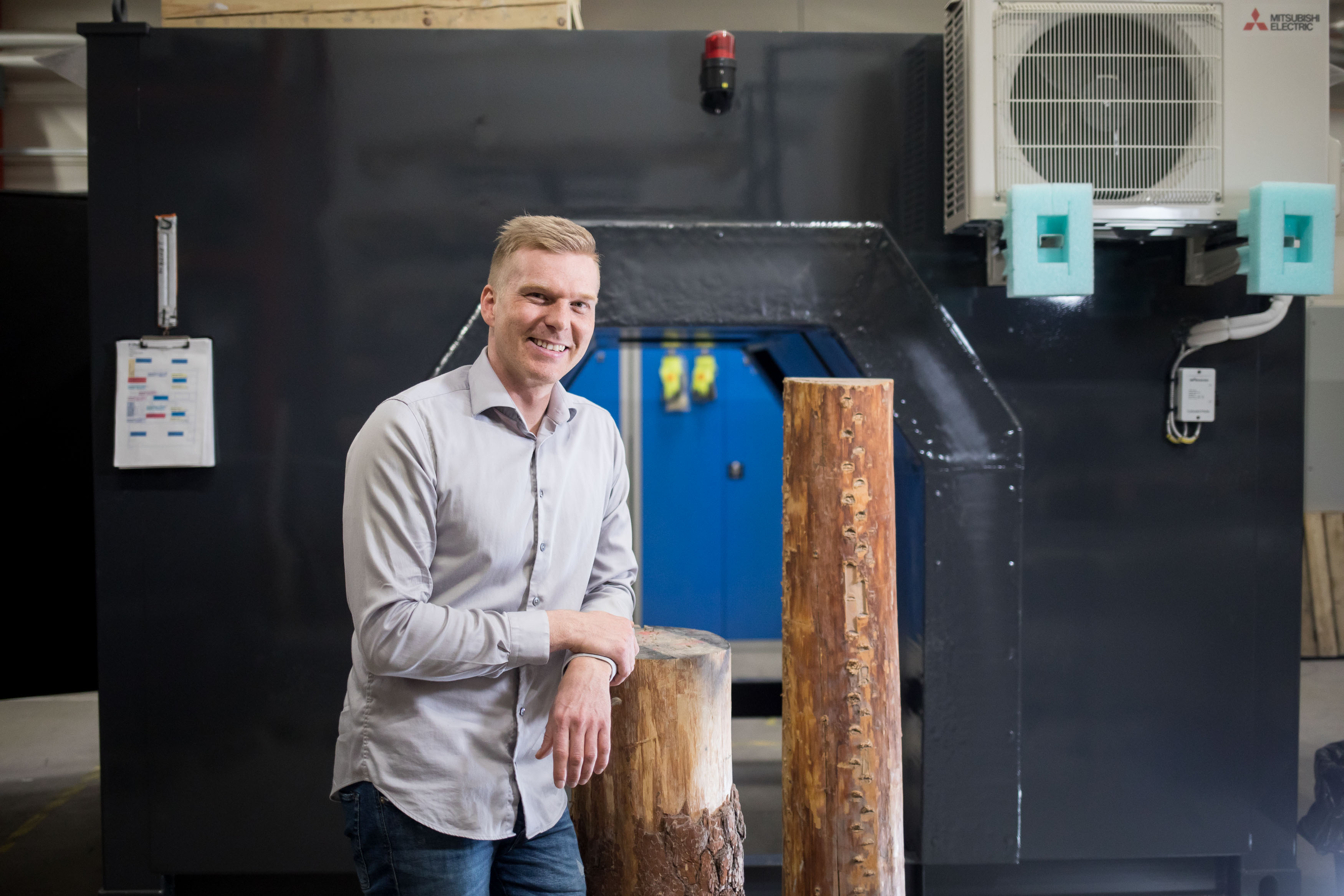Computational engineering researcher and Young Researcher Entrepreneur of the Year, Jere Heikkinen, wants to reform the Finnish sawmill industry with the help of artificial intelligence. Heikkinen’s company, Finnos, develops measurement equipment for log quality control.
When Jere Heikkinen was 17, he worked in a furniture store alongside his upper secondary school studies. From his workplace, he could see directly into the adjacent upper secondary school for adults, where mathematics lectures weretaking place.
Heikkinen was in the third grade of upper secondary school, but he hadn’t taken any advanced mathematics courses. Seeing the lectures piqued his interest, however. On top of that, his father promised him 200 euros for each mathematics class that he would get a ten out of ten for. Heikkinen, who had just moved into his own apartment for the first time, could use the money.
“I started my advanced mathematics studies right then and there, and completed all 15 courses in just over half a year. I took the whole pot promised by my father, 3000 euros”, Heikkinen says.
Mathematics created a career opportunity
In addition to money, Heikkinen’s studies in mathematics gave his future a direction. After upper secondary school, he completed his bachelor’s degree at the University of Oulu’s Department of Mathematical Sciences.
From Oulu, Heikkinen moved to the now called Lappeenranta-Lahti University of Technology to do an internship in ionospheric tomography. In addition to his work, Heikkinen completed his master’s degree in computational engineering.
In the summer of 2007, Heikkinen got the opportunity to participate in a project at university for a company called Bintec. The company manufactured X-ray equipment specifically for the needs of the sawmill industry and needed an expert in X-ray tomography. This is an X-ray method that Heikkinen had experience with thanks to his internship.
“They needed someone who could develop and incorporate tomography-related algorithms into their X-ray system. I was made responsible for the company’s application development and putting together my own team”, Heikkinen explains.
The project also gave rise to Heikkinen’s master’s thesis on inversion problems and X-ray tomography.
Imaging is increasing the profitability of the sawmill industry
Over the years, the team assembled by Heikkinen began to mature the idea of founding a new company. Heikkinen and the other team members had plenty of ideas on how the sawmill industry, which had remained unchanged for a long time, could be reformed.
“In the 2010s, digitalisation had not yet entered the sawmill industry in the same way as it had in other industries. Our view was that with bold reforms, we could multiply the company’s operations”, Heikkinen says.
In 2016, the team put the plan they had spent a few years considering into action. When Bintec’s founders retired, Heikkinen and his team bought the company’s business and founded Finnos.
Finnos’ operations are based on laser and X-ray imaging of logs. Imaging allows you to get a lot of information about the quality of a log, such as what kind of end product is worth making from it. When each log is sorted and sawn according to the information obtained from the imaging, the amount of loss is reduced and the use of raw materials is more efficient.
“Our products increase the sawmill load factor by several percent. The sawmill can produce products in a way that has not been previously possible. For example, various special products can be made in small batches profitably”, Heikkinen says.
The sawmill of the future will rely on artificial intelligence
Finnos’ growth has been incredible. A year after its founding, the company’s turnover was 1.2 million euros. In 2018, the turnover was as much as 6.5 million and in 2019, when the company’s financial year was shorter, almost 6.4 million euros.
“We have had a steep growth curve. At the same time, we have constantly put effort into product development”, Heikkinen says.
Thanks to product development, Finnos has continued to move closer to its great vision of revolutionising the sawmill industry. Already at the time of founding the company, Heikkinen was convinced that the entire production process of the sawmill should be analysed by artificial intelligence. In this way, the log’s journey from sorting to the final product could be closely monitored and the production plan continuously developed.
“From the beginning, our goal has been to combine the information from the final product with the moment that the first decision of the log’s journey is made at the sawmill. The ability of humans to design different production plans at once is limited, and the design is based largely on heuristics, such as rules of thumb and guesswork. In comparison, an algorithm is able to explore millions of different alternatives while always considering the whole”, Heikkinen reveals.
Researchers and entrepreneurs share a certain curiosity
Heikkinen has made many important professional choices during his life. Immersing himself in mathematics at upper secondary school and joining the Bintec project at university gave his career a clear direction.
In addition to being an entrepreneur, Heikkinen has been working on his doctoral thesis on tomography, which is nearing completion. Heikkinen doesn’t want to give up doing research altogether, even though there is endless work to be done with his company.
“Once you really get into being an entrepreneur, you don’t want to let go of it. Then again, the same thing applies to doing research”, he says.
Heikkinen believes many of the same principles apply to entrepreneurship and research. According to him, one feature in particular is highlighted in both roles.
“You have to be curious about everything. When researchers or entrepreneurs encounter a problem, they don’t ignore it, but begin to look at why it exists and how it can be solved”, Heikkinen concludes.
